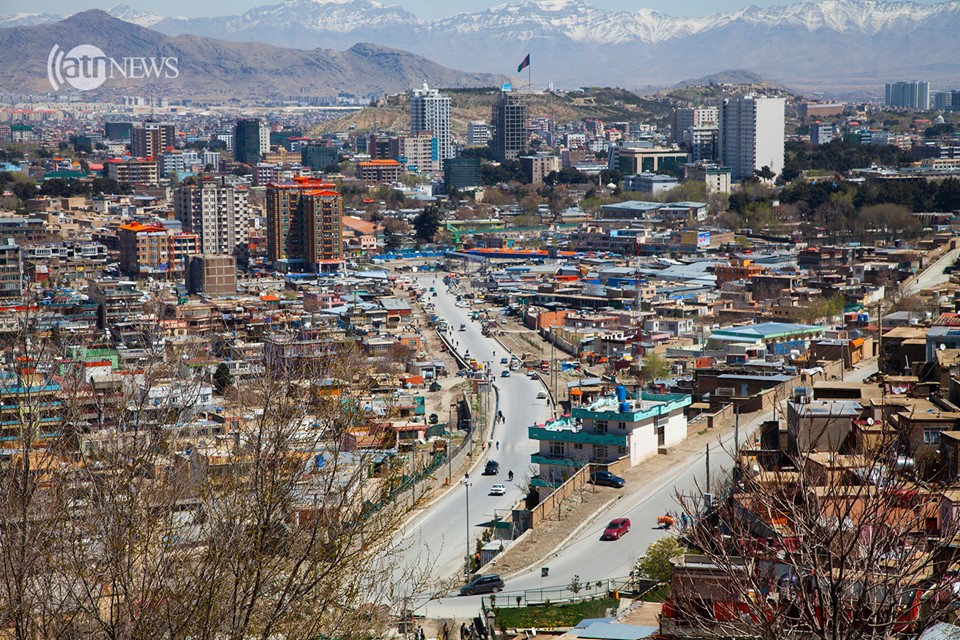Latest News
An outlook of Kabul city under Coronavirus lockdown

Kabul is living its hard time, facing the threat of the COVID-19 pandemic – although people do not take it seriously, the city is experiencing a lock-down.
Kabul is the second Afghan city hit by the virus. Though several cases are being tested positive for the virus in the capital Kabul every day, and restrictions have been announced by the authorities, neither the disease nor the restrictions on movements have been taken seriously by most people. Many believe that the real concern is that if the inconsideration and the recklessness continue, the city will walk into an uncontrollable situation.
Kabul City footage under Coronavirus lockdown
Image Credit: ARIANANEWS
The number of confirmed COVID-19 cases in all over Afghanistan is now in hundreds.
Image Credit: ARIANANEWS
Allaudin area of Kabul; movement seems less than it was before.
Image Credit: ARIANANEWS
Bagh-e Bala area of Kabul; now deserted.
Image Credit: ARIANANEWS
Dahanai Nal area of Kabul; People work here despite the lockdown.
Image Credit: ARIANANEWS
Central area of Kabul, Dar-ul-Aman represents a decent curfew.
Image Credit: ARIANANEWS
Enhesarat area of Kabul; People still work here reasoning poverty.
Image Credit: ARIANANEWS
Kart-e-Char, the heart of Kabul; lockdown almost welcomed by people.
Image Credit: ARIANANEWS
Kart-e-Mamoorin area; deserted for the sake of the lockdown.
Image Credit: ARIANANEWS
Kart-e-Parwan; People seem to be abiding by the lockdown.
Image Credit: ARIANANEWS
Kot-e-Sangi area of Kabul; Few people walk around.
Image Credit: ARIANANEWS
Pol-e-Sokhta area of Kabul – Commuted as usual.
Image Credit: ARIANANEWS
Qowa-e-Markaz Road, a commercial spot of Kabul; no trade activities are seen.
Image Credit: ARIANANEWS
Darwaza-e-Sher, hillside area; inhabited by the poor – the quarantine has been painful here.
Image Credit: ARIANANEWS
The quarantine measures have been imposed in many other countries across the world. To name a few, US, India and Brazil have been implementing curfew as a part of efforts to slow down the transmission of the Coronavirus. Meanwhile, Americas, Indians and Brazilians have welcomed the lock down, helping the government in the fight against the COVID-19 by staying put.
Freeway connections in Rio de Janeiro
Image Credit: REUTERS
Empty soccer fields in the Flamengo neigborhood of Rio de Janeiro
Image Credit: REUTERS
Maracana stadium in Rio de Janeiro
Image Credit: REUTERS
Ipanema beach in Rio de Janeiro
Image Credit: REUTERS
The Candelaria church and Presidente Vargas Avenue in Rio de Janeiro’s downtown
Image Credit: REUTERS
A mall parking in Rio de Janeiro’s Barra da Tijuca neighborhood
Image Credit: REUTERS
The Rio-Niteroi bridge in Rio de Janeir
Image Credit: REUTERS
The Christ the Redeemer in Rio de Janeiro
Image Credit: REUTERS
The Rio das Pedras slum in Rio de Janeiro
Image Credit: REUTERS
Presidente Vargas Avenue in Rio de Janeiro
Image Credit: REUTERS
Many US states and cities have told their citizens to stay home and avoid contact with other people. These images show how empty schools, parking lots and city streets have become.
US cities in Coronavirus quarantine, seen from above
Image Credit: The Guardian
US cities in Coronavirus quarantine, seen from above
Image Credit: The Guardian
US cities in Coronavirus quarantine, seen from above
Image Credit: The Guardian
US cities in Coronavirus quarantine, seen from above
Image Credit: The Guardian
US cities in Coronavirus quarantine, seen from above
Image Credit: The Guardian
In India, a three-week nationwide lockdown has been imposed by Indian Prime Minister Narendra Modi, in an attempt to halt the spread of the Coronavirus.
India’s 1.3billion population in lockdown – in pictures
Image Credit: The Guardian
India’s 1.3billion population in lockdown – in pictures
Image Credit: The Guardian
India’s 1.3billion population in lockdown – in pictures
Image Credit: The Guardian
India’s 1.3billion population in lockdown – in pictures
Image Credit: The Guardian
India’s 1.3billion population in lockdown – in pictures
Image Credit: The Guardian


